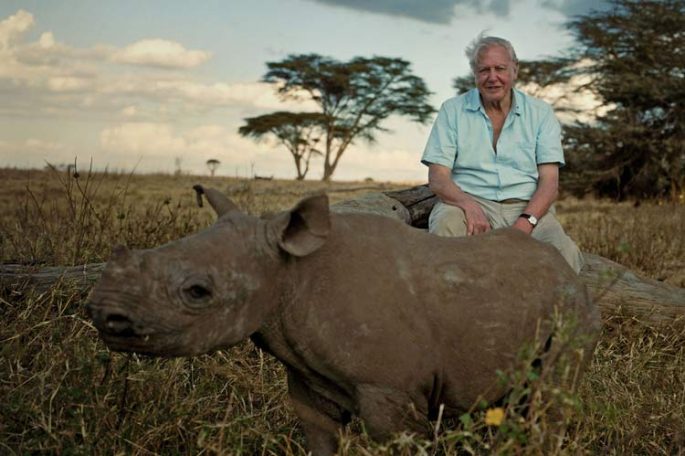1. Wildlife for the masses – 1965
Sir David Attenborough joined the BBC as a trainee in 1952, having only ever watched one television program. His early career included the high octane round-table debate, Animal, Vegetable, Mineral? But the tenacious 28-year-old was seeking new ways to make films and a life outside the television studio. The result was the hit series Zoo Quest, which combined live studio presentation with footage shot on location for the first time. It brought rare animals – including chimpanzees, pythons and birds of paradise – into viewers’ living rooms and proved wildlife programs could attract big audiences.

2. Monty Python’s Flying Circus – 1969
He didn’t just bring wildlife into our lounges, however. Few people today also know he was responsible for unleashing the UK’s greatest comedy troupe on the masses too. As BBC’s director of programming, he commissioned Monty Python’s Flying Circus, a cult sketch show which made stars out of John Cleese, Michael Palin, Terry Jones, Eric Idle, Graham Chapman and Terry Gilliam. The show was a global phenomenon, inspiring generations of comedians around the world. In Britain, Python became part of the nation’s cultural DNA, encapsulating a recognisably British eccentricity and spawning popular catchphrases and figures of speech.
3. Inventing epics – 1979
In the late 1970s, he took inspiration from series like Civilisation and The Ascent of Man and travelled the globe to deliver his definitive take on the wonders of the natural world. A natural history program of this scale and ambition had never been attempted before. The result was Life on Earth, a televisual feast which used stunning photography and innovative camera techniques to show animals in their natural habitats. It’s estimated that 500 million people watched the series worldwide
4. A rose by any other name – 1994
While filming The Private Life of Plants, Sir David noticed the world’s largest flowering plant had quite a racy name – the Amorphophallus Titanum.
Instead, he gave it another name in his script – titum arum – coining the plant’s common name in the process. But as well as naming species, many plants and animals have been named after Sir David. They include a flightless beetle, a species of hawkweed found only in the Brecon Beacons and a long-necked dinosaur called the Attenborosaurus.
5. He’s still pushing boundaries
Five years ago, he dived 304 metres in a submersible off the Australian coast to film previously unseen parts of the Great Barrier Reef, breaking the record for the deepest ever dive on the reef. He also collaborated with the Natural History Museum on a virtual reality project, and is filming his next BBC series – Planet Earth II – in Ultra HD.
Next time you tune into a major Attenborough documentary, you can be pretty sure you’re witnessing a breakthrough in future broadcasting technology.

